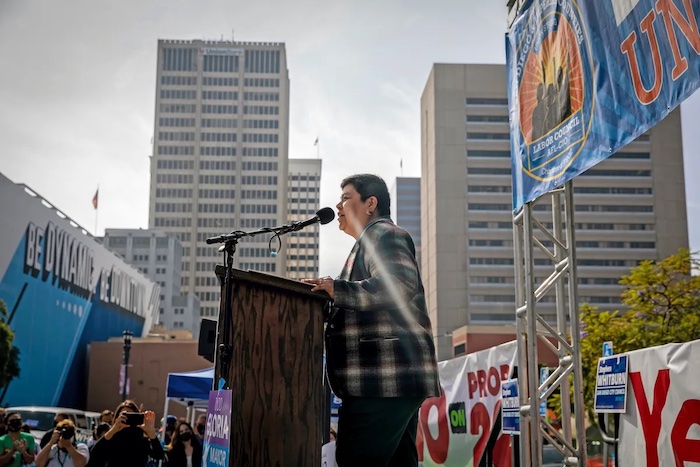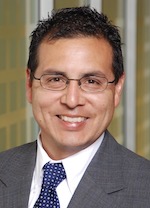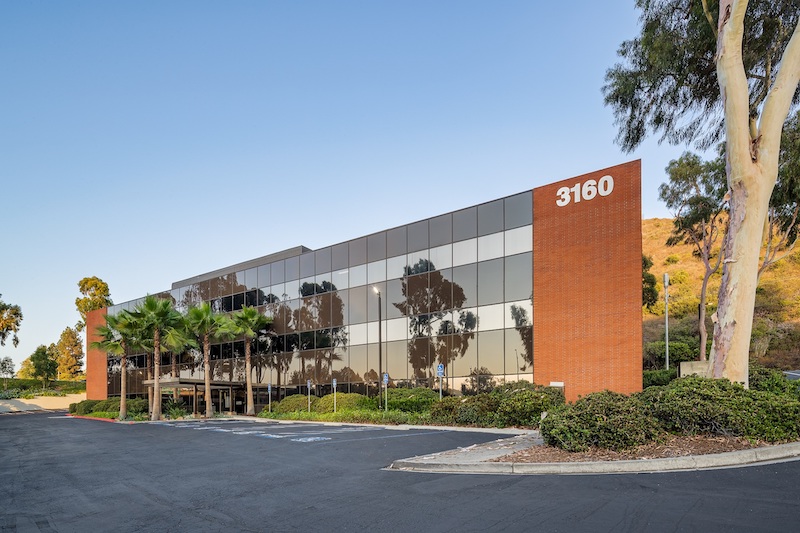Daily Business Report: Tuesday, April 5, 2022
Bumble Bee Seafood Company eliminates
23 million pieces of plastic waste a year with
change to paperboard cartons on multipack cans
The Bumble Bee Seafood Company is eliminating an estimated 23 million pieces of plastic waste per year by becoming the first shelf-stable seafood brand to change its multipack can product packaging from shrink wrap to readily recyclable paperboard cartons.
The change will apply to all multipacks produced by Bumble Bee, a total of 23 SKUs including 4-can, 6-can, 8-can, 10-can and 12-can packages. The paperboard is made from 100 percent recycled material, with a minimum of 35 percent post-consumer content and is certified by the Forest Stewardship Council. That means that the multipack can product packaging is fully recyclable – both the box exterior and the cans inside.
In 2020, Bumble Bee launched “Seafood Future,” a sustainability and social impact program with three areas of focused commitment: Fish, Ocean, and People. The commitments included a goal to ensure that 98 percent of Bumble Bee packaging would be recyclable by 2025. This change from shrink wrap to paperboard will move the brand from 96 percent to 98 percent readily recyclable packaging, surpassing the goal timeline by three years.
“We recognize that the ocean provides food for more than 3 billion people annually. To keep feeding people through the power of the ocean, we need to also protect and nurture our ocean,” said Jan Tharp, president and CEO. “We know that the packaging we use on our products can play a role in that. Changing our multi-pack packaging to be readily recyclable will help us continue to meet our commitment to keeping plastic out of landfills and out of the ocean.”
Bumble Bee partnered with R.A. Jones to develop the custom machine and execution plan, a two-year process.

Why is so much special interest money
flowing into a San Diego special election?
by Ben Christopher | CalMatters
If you want a vision of California’s political future in 2022, consider San Diego a crystal ball.
Tuesday, the polls close in one of the more contentious of an unusual flurry of special elections prompted by the “Great Resignation” of state legislators. A south San Diego Assembly seat opened up when progressive Lorena Gonzalez, a one-person factory of state-shaping, headline-grabbing legislation, stepped down in January to take the top job at the California Labor Federation, the state branch of the AFL-CIO.
That left a surprise vacancy that organized labor groups and deep-pocketed business interests — the two political forces that regularly battle for the soul of the California Democratic Party — are eager to fill with the candidate of their choosing.
So far, the two Democratic candidates, Georgette Gómez and David Alvarez, have raised a total of more than $770,000 in direct contributions.
But even more, more than $1.2 million, has been spent by independent expenditure committees — groups typically funded by large corporations and unions that are not subject to the contribution limits that restrict a candidate’s fundraising efforts.
Where’s all the special interest money coming from?
In many cases, it’s the usual suspects of California electioneering. But contribution records filed with the state also include a few surprises, including the first sign of a new, aggressive electoral strategy by the ridesharing giant Uber, plus some surprisingly big donations from a single towing company in Sacramento.
Gómez, a community organizer and former City Council president who unsuccessfully ran for Congress in 2020, is the preferred candidate of labor, including teachers’ unions and the California Nurses Association. Gonzalez endorsed Gómez in early February. The state’s largest business groups have gotten behind Alvarez, , a small business owner who narrowly lost his race for San Diego mayor in 2014 and shared the city council dais with Gómez.
Peter Soutowood joins Platt/Whitelaw
Architects as a senior associate
Platt/Whitelaw Architects Inc., a San Diego-based, full-service architecture firm, has hired Peter Soutowood as a senior associate. Soutowood is a licensed architect in the state of California who previously worked with Platt/Whitelaw Architects as a project architect.
Soutowood is a member of the American Institute of Architects and the American Society of Architectural Illustrators.
‘He has over 18 years of experience in project management, architectural design, food service design, team leadership and construction administration. He is also a subject matter expert for the California Architects Board, where he oversees the California Supplemental Exam.
While working with Platt/Whitelaw Architects as a project architect from 2007 to 2012, Soutowood oversaw a design team of engineers and construction management staff, managing projects of all sizes in every stage, from initial design and planning through project completion.
In the 10 years since working with Platt/Whitelaw Architects, Soutowood has gone on to hold various positions, including president of SMPS Go To Toastmasters and various roles at other architecture firms, including his own.
Soutowood was also chair of the Design Review Board in La Mesa for three years and has served as chair of the La Mesa Village Association since July of 2016.
Cal State San Marcos names next dean
of College of Business Administration
Cal State San Marcos announced the appointment of Ronald Ramirez as the next dean of the College of Business Administration (CoBA). Ramirez will start in his position on July 1. He will take over from Ben Cherry, who has served as interim dean since August 2021.
Ramirez began his career in private industry, working in the telecommunications, semiconductor and oil industries. He started as a faculty member in 2003 at the University of Colorado Denver (UCD).
Currently, Ramirez serves as the associate dean of programs at the UCD Business School. He is also the BSBA program director and has served as faculty director of the Professional MBA and Information Systems programs.
“The College of Business Administration is exceptionally well positioned to build upon its foundation of excellence and become a higher education leader in the Southern California region. Our agility and entrepreneurial spirit will enable new strategic programs and services that will continue to improve the success of our graduates, our communities and the state of California,” said Ramirez
M.C. Strauss Company acquires Mission Vally
office campus for $17.96 million
Center Point, Mission Valley, a Class A multi-tenant office campus totaling 79,215 square feet in Mission Valley, has been purchased for $17.96 million by San Diego-based M.C. Strauss Company. The two-building campus is located at 3110-3160 Camino Del Rio South, and was 91.2 percent leased at sale. The seller was City Group.
Cushman & Wakefield’s Rick Reeder and Brad Tecca of the firm’s Capital Markets in San Diego represented both the buyer and seller in the transaction. Derek Applbaum with Colliers provided leasing advisory.
U.S. Space Force taps Space Micro
to build GEO lasercom terminals
Space Micro Inc., powered by Voyager Space, and a provider of digital, electro-optic and communications systems for satellites, deep space exploration and other space equipment, has received an award from the U.S. Space Force, Space Systems Command for a contract to build a secure laser communications terminal. Under the contract, Space Micro plans to deliver a flight model to Space Force in early 2024.
This new award builds on an initial development contract the U.S. Air Force issued to Space Micro in 2019. This initial contract and subsequent modifications provided funding for Space Micro to update the current design specifically for this mission and to provide communications interoperability to existing systems. Space Micro delivered an engineering model to Space Force in late 2021.
“We are happy to be able to provide Space Force high-precision laser communications terminals tailored for GEO missions, fully developed here in the United States,” said David Czajkowski, CEO of Space Micro.
Qualcomm completes acquisition of Arriver
business from SSW Partners
Qualcomm Inc. announced it has completed its acquisition of Arriver from SSW Partners, enhancing Qualcomm Technologies’ ability to deliver open, fully integrated, and competitive Advanced Driver Assistance System (ADAS) solutions to automakers and Tier-1 suppliers at scale.
As a result of the acquisition, Qualcomm Technologies will incorporate Arriver’s Computer Vision, Drive Policy and Driver Assistance assets into its leading Snapdragon Ride Platform portfolio, building on its previous collaboration with Arriver, when owned by Veoneer Inc.
Veoneer and Qualcomm Technologies will also expand their strategic collaboration. The parties have signed a new agreement that ensures the continuation of service and support for customers and details their future collaboration on roadmap alignment and technology cooperation in the development for Advanced Driver Assistance Systems.
Photo: Cristiano Amon, president and CEO of Qualcomm, left, and Nakul Duggal, senior vice president and GM automotive for Qualcomm Technologies.
Sharp HealthCare’s seven hospitals earn
top score in 2022 Healthcare Equality Index
Sharp HealthCare is pleased to announce that each of its seven hospitals will be designated as an “LGBTQ+ Healthcare Equality Leader” in the Human Rights Campaign Foundation’s
2022 Healthcare Equality Index.
With a perfect score of 100 at every hospital, Sharp received the maximum ratings possible for its nondiscrimination and staff training; patient services and support; employee benefits and policies; and patient and community engagement initiatives.
Sharp hospitals earning this designation include Sharp Chula Vista Medical Center, Sharp Coronado Hospital, Sharp Grossmont Hospital, Sharp Mary Birch Hospital for Women & Newborns, Sharp McDonald Center, Sharp Memorial Hospital and Sharp Mesa Vista Hospital. This vital effort was launched and sustained by the founders, chapter leaders and members of the Sharp Equality Alliance (SEA), a volunteer organization comprised of Sharp HealthCare executive leaders and employees dedicated to embracing diversity, promoting inclusion and achieving equity.
Developers expand next phase for Landmark at Otay
Majestic Realty Co. and Sunroad Enterprises have begun construction on the second half of their inital four-building Landmark at Otay development site in Otay Mesa.
In addition, the developers have secured 17 acres of adjacent land to expand the industrial center to a six-building park that will encompass more than 1.1 million square feet of Class-A, modern bulk warehousing and distribution facilities upon build out.
Current construction is taking place on 50 acres of the 67-acre master-planned development and includes a 240,975-square- foot building located at 1610 Landmark Road, as well as a 235,085-square-foot building at 1910 Landmark Road. Both will feature 36-foot ceiling clearance and their own 185-foot, secure truck courtyard with individual trailer storage. Each building will also deliver 51 trailer parking stalls, 40 dock-high doors, two ground-level doors with ramps and ESFR fire systems.
Phase II of the project is being marketed and leased through the Colliers International San Diego team of Mark Lewkowitz, Chris Holder and Will Holder, and is anticipated for completion in Feb. 2023.
Tower 16 Capital Partners acquires
180-unit multifamily property
San Diego-based Tower 16 Capital Partners has acquired Copper Ridge Apartments, a 180-unit multifamily property located in Albuquerque, N.M. The Copper Ridge Apartments project was built in 1972 and was acquired from an out-of-state seller for an undisclosed price.
“This acquisition marks our fifth property acquired in the Albuquerque market and brings our current portfolio in the Albuquerque market to just over 750 units,” said Tower 16 co-founder Tyler Pruett. “We are continuing to expand our presence in the Albuquerque market given the strong employment growth and attractive supply-demand imbalance coming out of the pandemic. We remain firm in our conviction the market will continue to see an in-migration of people from more expensive markets driven by the increasing job opportunities in the area as well as the low cost of living.”







